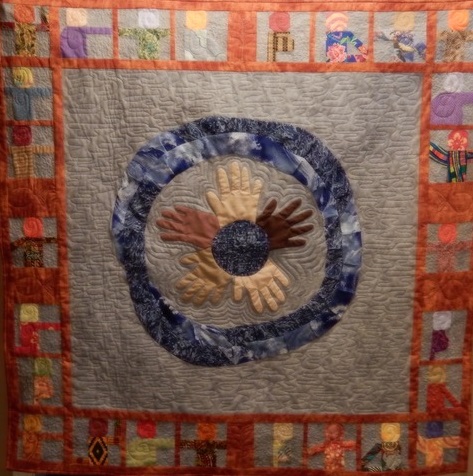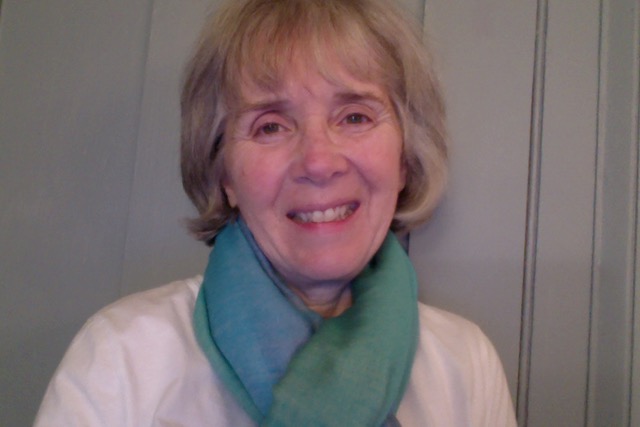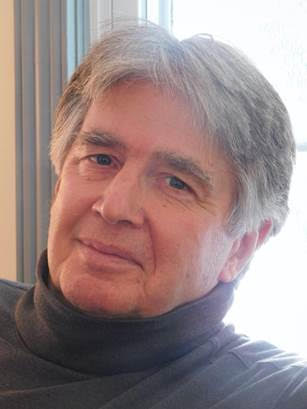 “Water is Life,” by Lynn Miller
“Water is Life,” by Lynn Miller
Yearning for Water:
The Story of a Traveling Quilt
by BRADFORD MILLER
You may have dismissed the quilter’s art, as I once did. Even the most exquisite quilts, it seemed to me, were just limp and lifeless byproducts stored in church basements and sold along with cakes and cookies at bake sales. There was no artistic struggle evident in their cloth patches, no triumph to be celebrated in the completion of a coverlet.
As I have come to understand it now, however, quilts are, in reality, declarative artifacts of unbelievable patience and deep understanding, the fruit of humility and long-suffering, and of great artistic skill.
Because I am married to a quilter, I have been an eye-witness to the work and world of quilt-making and so well positioned not just to appreciate quilts, but to know them as natural wonders, as tactile testaments of love and endurance.
Traditional quilting took place in groups of women, and still does, with hands occupied while hearts and minds are focused on the emotional and spiritual threads sewn by women as they patched together their understanding of themselves and their communities, and, no doubt, of their husbands, for better or worse, while making something beautiful that would last for centuries.
In recent years, the art of quilting has exploded in its methods and modes, into works of mixed media, abstract expressionism, landscape limning, human portraiture, and even the confabulations of pure imagination, while continuing to articulate the concern for the human community from which it has always sprung. Thus quilting has emerged from the dark spaces of church basements and confidently entered the public square. Quilters themselves now come from all walks of life, many are even activist artists determined to address issues of social conscience and disturb the status quo.
I am privileged to tell you about a quilt created by my wife Lynn, a quilt that began with a night-time vision and made its way through a host of exhibition rooms in Europe and the United States. Lynn’s dream was otherworldly, but, nonetheless, real. It was centered upon an eye-like aperture enclosed by a larger circle of water, set against an undulating expanse of water, all of which was framed by small shadowy female figure — a water dream for sure. Lynn was already a friend to water, aware that this miracle substance is the most necessary element in all of planetary life, crucial to every life function — cooking, bathing, drinking, indeed to well-being itself. And following a Bahá’í spiritual practice, Lynn also drinks from fountains of living water and possesses a compassionate awareness of the struggles of women and girls around the world, who bear the burden of procuring water in less developed societies where water resources are stressed and frequently far away, places in which to venture to the nearest stream or well can mean a back-breaking and dangerous journey through lands rife with armed conflict.
Still, Lynn’s dream carried no obvious context, no rhyme or reason. She came downstairs the next morning puzzled, and made a sketch to study it, and to wonder why. Then, as she thumbed through one of her quilters’ magazines later that day, she saw an announcement for an upcoming “quilters’ challenge,” a term used for a juried competition, on the theme: “Water is Life: Clean Water and its Impact on the Lives of Women and Girls.” Immediately, Lynn understood the meaning of her dream. The challenge was sponsored by Quilt for Change, an organization known to fling artful fabric into the face of the world with needle-sharp courage and a fierce moral conscience. But the deadline for entering was only four days away.
Racing against the clock, Lynn laid out her fabric against the template of her dream. She appliquéd five variously-hued human hands, such as had emerged from the all-seeing eye that appeared in her dream, and then added an outer ring of water to support the theme. Next, she brought forth those symbolic female figures, each engaged now in a life-process, washing clothes, teaching, cooking, praying, singing, and dancing. Lynn quilted a blue background with thousands of stitches, both by hand and long-arm machine, to simulate the dynamic movement of water. And thus a work of art was born, five hands at center emerging as though from the eye of God, into the conscience of the world, pleading and praying for a basic human right. She named it “Yearning for Water,” boxed it and mailed it to the contest organizers in the nick of time.
If I may say so, I think her entry has a primitive, raw reality, like the speech of a child, an unrehearsed cry from the heart, like a prayer spoken in the darkness when one is afraid and no one else is around, pleading for a miracle. And thus, as I see it, her quilt emerges from the traditional territory of the heart while also speaking on behalf of the global community. The “artist statement,” which accompanied her quilt, speaks for itself:
My quilts are patterns of cloth with which I tell a story, describe a feeling, or send a message. In my work there is always the hope that life itself would also be well made and lovingly touched by the human hand.
My threads, fabrics, and every quilted stitch, are words that I cannot say in any other way. I speak a language that would pull us closer together and make us more aware of one another in the fabric of our commonality, a sisterhood of mothers and daughters.
Not so much art for art’s sake, but art to inspire the maturation of human consciousness, towards openness of hand, toward love and justice, and the sound of water in the dreams of children.
Therefore, my quilt is a petition that no one, women and girls in particular, should be deprived of their daily share of fresh water. The needs of women are many as they nurture and care for their families. Young girls are often required to shoulder these responsibilities at an early age. Throughout life, be it years of childhood, puberty and menstruation, child bearing, or old age, water is crucial.
Thus my quilt is a prayer said on behalf of women and girls all over the world, a prayer that this quilt will excite discussion and action.
Weeks later, she received a call informing her that her quilt was being sent back with further instructions. It was to be mailed by diplomatic pouch to Geneva, Switzerland, to be exhibited at the United Nations’ Palais des Nations, to commemorate United Nations World Water Day, in March 2016. Lynn’s quilt was one of forty-one selected from entries from seven countries, including France, Italy, Canada, Switzerland, Israel, and Mexico.
From there, the quilt would travel to the American Exchange in Rome, then back home for exhibition in six major quilt shows across the United States, on to the New England Quilt Museum, and, finally, to Kean University in New Jersey — and all of this over a two-year period. I believe Lynn’s quilt was made to comfort and to warm, like any quilt; as important, it was made to provoke thought, to tip the balance of things as they are, to disturb the mind, to the disrupt the heart’s peace, and to invite reflection on what it means to yearn for water.

Lynn Miller

Bradford Miller

